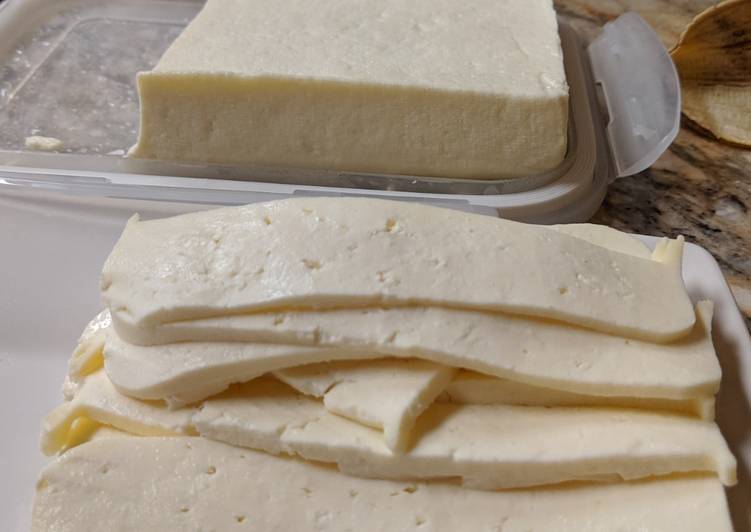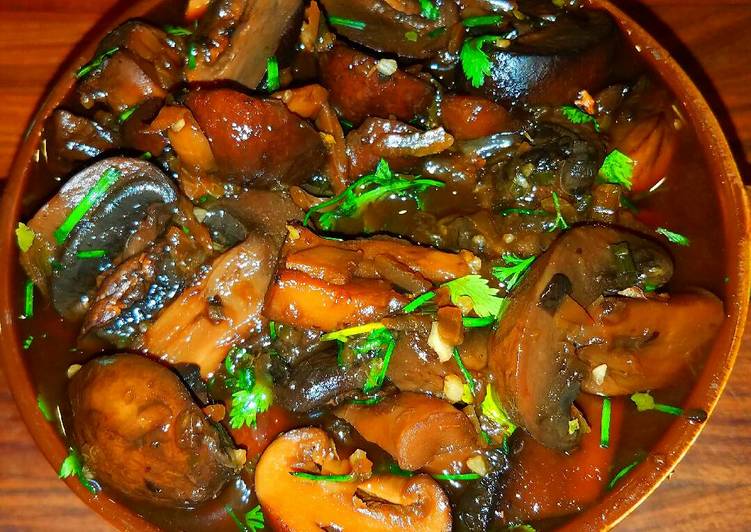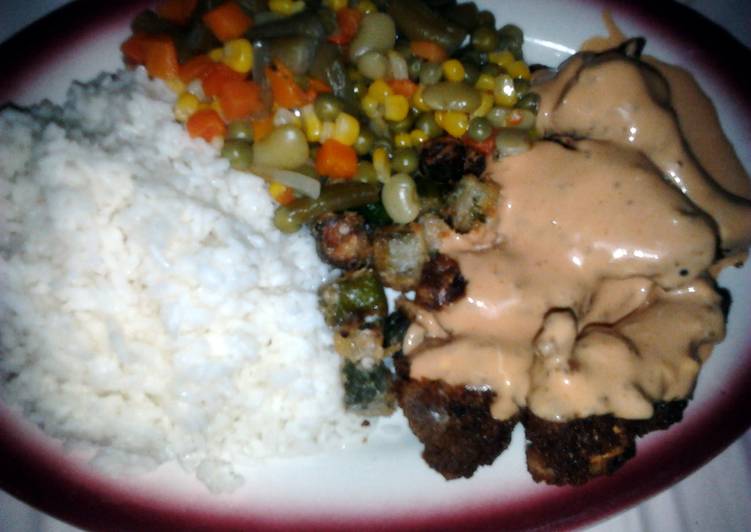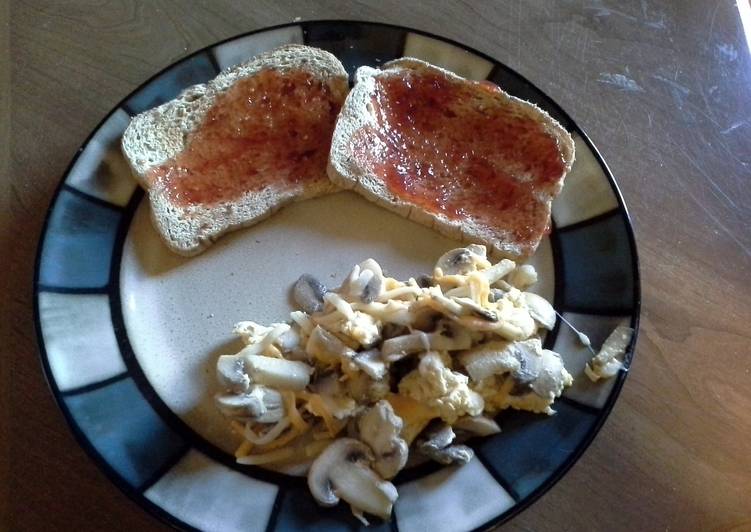Recipe of Speedy Vegetarian Venezuelan Cuajada Cheese
- By Jack Gardner
- 16 Dec, 2019

Hello everybody, I hope you are having an amazing day. Today I will show you how to make a distinctive dish, Vegetarian Venezuelan Cuajada Cheese. It is one of my favourite food recipe, this time i will make it a little bit tasty. This will be smell and look delicious.
Vegetarian Venezuelan Cuajada Cheese Recipe. The word 'Cuajada' means 'curdled' in Spanish. Famous in the north-eastern regions of Spain, earlier it was made from ewe's milk, but it is industrially This cheese has smooth, creamy and a bit delicate texture though sugar or honey is added to it for consumption.
You can cook Vegetarian Venezuelan Cuajada Cheese using 5 ingredients and 16 steps. Here is how you cook that.
Ingredients of Vegetarian Venezuelan Cuajada Cheese
- You need 1 Gallon of Pausterized Milk.
- Prepare 1/4 teaspoon of calcium chloride.
- Take 1 packet of Mesophilic Starter Culture.
- Make ready 1/8 teaspoon of vegetable rennet.
- Prepare 8 grams of salt.
Only a few restaurants make these For our arepas, Cordoba has cooked black turtle beans and shredded mozzarella cheese in advance.He slices an avocado and fries plantain slices.The typically Venezuelan "Black Beans and Rice" dish is made of onions, celery, red pepper, white rice, vegetable broth, turmeric, oregano, salt, eggs, black beans, lemon wedge and Tabasco.The Venezuelan "Black Beans and Rice" dish is usually served with lemon juice and Tabasco.
Vegetarian Venezuelan Cuajada Cheese instructions
- Heat the milk until it reaches 36° C or 97° F.
- Mix the calcium chloride with a bit of water (1/4 or 1/8 cup of water) and add to the milk.
- Add the starter culture to the milk.
- Stir for 2 minutes.
- Let it sit for 45 minutes (keep the temperature with slow heat for ~2 minutes every ~15 minutes).
- Mix the rennet with a bit of water (1/4 or 1/8 cup of water) and add to the milk.
- Stir for 2 minutes.
- Let it sit for 45 minutes (keep the temperature with slow heat for ~2 minutes every ~15 minutes).
- Use a knife to cut the curd into squares of 1/2 inches.
- Slowly stir for 15 minutes. The curds will clump together. Cut them back into squares of 1/2 inches while stirring. Keep the temperature of the whey at 36° C or 97° F the whole time..
- Remove the pot from the stove and use a slotted spoon to transfer the curd to a colander lined with a cheesecloth (the thinner the better).
- Let the curd drain the excess of whey for 30m.
- Transfer the curd to a bowl and knead together with the salt.
- Now transfer the curd back to a cheescloth and into a mold / press.
- Press with 4-8 pounds of weight for 1 hour.
- Extract the cheese from the mold and refrigerate.
The taste and consistency of the cheese most closely resembles that of mozzarella, but is built up in layers.With a rich pastry crust wrapped around salty queso blanco, these Venezuelan cheese sticks put their mozzarella brethren to shame.I've eaten Venezuelan arepas, too, decadently stuffed with meat, cheese, beans and vegetables (not all together).
Venezuelan food is melting pot of European cuisine (especially Italian, Spanish, and French), African cuisine, and traditional dishes from indigenous cultures.Within the country there is a lot of culinary diversity as well.Along the coastline, fish, shellfish, fish soups, fish stews, and dishes with coconut.Tequeños (Venezuelan Cheese Sticks) Recipe. · Vegetarian Mushroom Arepas filling is sweet, tangy, and earthy.Serve these arepas for brunch or dinner! · Eggless Venezuelan Tequeños are sticks of cheese wrapped wrapped with a crunchy and slightly sweet dough and then fried to golden..as cheese (cuajada), avocado, or (especially in Venezuela) split and used to make sandwiches be served with various accompaniments such as cheese (cuajada), avocado, or (especially in Venezuela) split and sabzi is a delicious Indian vegetarian dish comprising of a mixture of veggies in cooked … Vegetarian cheeses, on the other hand, are coagulated with either a synthetic, or microbial rennet, derived from mold or yeast, or with a vegetable- or plant-derived rennet, which would typically come from the cardoon thistle plant.





